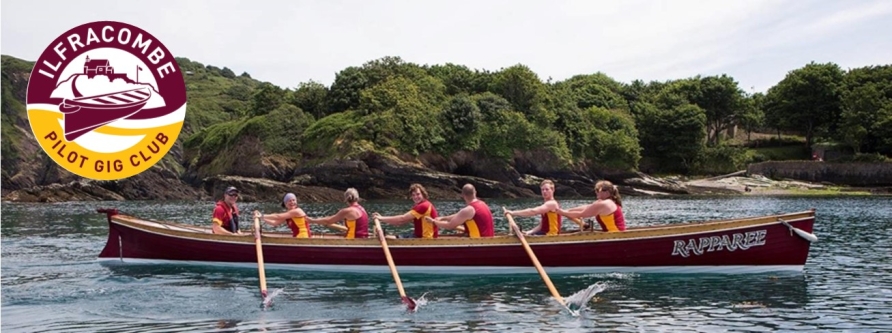Our boats
We have two fibreglass boats Lantern and Capstone, which we use primarily for training, and two wooden boats, Rapparee and Rogue.
The gigs themselves are governed by the CPGA (the Cornish Pilot Gig Association), who ensure all gigs are made to be almost identical. Some of the the finer details may vary, but all must be made of elm, be 32 feet in length, and just under five feet wide. They must have six seats (thwarts) for rowers, one for the cox, and one other for the pilot. All modern gigs are based on drawings by Ralph Bird taken from the measurements of Treffry, a gig built in 1838 by William Peters of St. Mawes, and currently owned by Newquay Rowing Club. A few of these very old gigs still survive, many in their original homes on the Isles of Scilly.
The Sussex, one of the original Scillies gigs (1889) and the last to be involved in a rescue as a lifeboat.
Ilfracombe’s two wooden gigs were built near Dartmouth, by traditional boat-builder Brian Pomeroy. Rapparee was built in 2008 to a slightly different design to our newest gig, Rogue. Between building Rapparee and Rogue, the CPGA tightened up the rules, and so Rogue and other new boats have to have a slightly lower bow. Rapparee slightly higher bow can be an advantage in our local, rough, seas.
Rogue has the lower bow but has now more than proven herself in the infamous Ilfracombe ‘slop.’ Both our gigs are made of a mix of timbers, The keels are a combination of Opepe and Oak, for strength and lightness, with all the planking for their ‘clinker’ construction being of the only permitted timber, elm. The elm for Rapparee and Rogue is from the same batch of Scottish Wych Elm. This British elm is running out, and elm timber now has to be largely sourced from countries such as Finland.
Each gig takes around five months to build. Brian Pomeroy has built many gigs, which are almost exclusively rowed by Devon clubs, many of which are here on the north coast. The list includes Ajax, Cadmus, Double Dutch, Lightning, Verbena and Whitford, to name but a few.
We try to carry out as much of the maintenance on all our boats as we can. Most of this work takes place in the winter when we are not using the boats as much. To see a winter programme of maintenance work, have a look at this gallery of photos.
A schematic of the different parts of a gig, and other essential equipment as drawn by one of our members, Kerra Dagley (click on it for a larger image).








